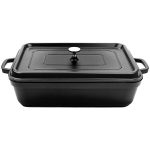What is Grasscloth Wallpaper?
Grasscloth wallpaper is a popular choice for adding texture and elegance to interiors. It is made from natural fibers like bamboo, jute, sisal, and seagrass. These fibers are handwoven, creating a unique, organic finish for walls. Each roll of grasscloth wallpaper is distinct due to its handcrafted nature. This makes it an excellent option for those seeking a personalized and earthy aesthetic.
Definition and Characteristics
Grasscloth wallpaper features a handcrafted surface created from natural fibers. These fibers are typically backed by paper, making them easy to install. The wallpaper comes in various weaves, from fine and subtle to bold and coarse textures. Its non-uniform patterns add depth and interest to any space. It does not have repeating designs like traditional wallpaper, which gives it a bespoke charm. Many homeowners love its natural imperfections, as they enhance the organic look.
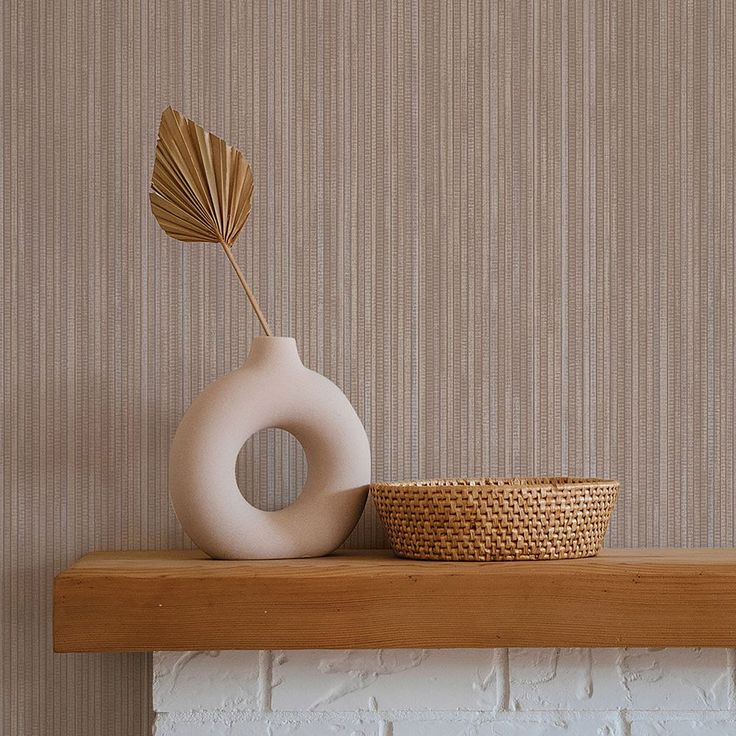
How Grasscloth Differs from Other Wallpaper Types
Grasscloth wallpaper stands out notably when compared to traditional wallpaper. Unlike standard wallpaper, which typically features repetitive prints and smooth surfaces, grasscloth is all about texture and natural beauty. The woven finish of grasscloth introduces an element of depth and warmth that cannot be replicated with typical wallpaper materials.
In contrast, vinyl or paper wallpaper often has the advantage of being washable and more durable. Grasscloth, however, is generally more delicate and requires careful maintenance to preserve its unique qualities. For instance, it is important to avoid excessive moisture when cleaning, as water can damage the natural fibers.
Another key difference is that grasscloth is eco-friendly. It is made from renewable fibers like sisal, jute, or seagrass, rather than synthetic materials. This makes it an appealing choice for those looking to create a sustainable home environment.
Additionally, the handwoven production process of grasscloth sets it apart from its counterparts. Each roll is unique, featuring variations in texture and color that add character to a room. This individuality allows for a personalized touch in home decor, making grasscloth an exquisite choice for those seeking to enhance their living spaces.
Popular Grasscloth Wall Decor Patterns
Grasscloth wallpaper offers diverse patterns that appeal to various tastes and spaces. These designs range from understated neutrals to bold and vibrant pieces, showcasing its versatility in home decor.
Textured and Neutral Designs
Textured grasscloth wallpaper introduces depth without overwhelming the space. Neutral tones like beige, gray, or soft white create a calming backdrop. These understated designs work well in living rooms, offices, or bedrooms. They complement wooden furniture and rustic interiors seamlessly. The natural texture adds sophistication while maintaining an earthy vibe. Subtle woven patterns highlight the handcrafted nature of the wallpaper and provide visual interest without dominating.
Bold Colors and Metallic Finishes
For a dramatic effect, bold colors and metallic accents are perfect. Vibrant shades like navy, emerald green, or burgundy make a statement in dining rooms or feature walls. Metallic finishes, such as gold or silver threads, reflect light and add a touch of luxury. These designs suit modern interiors and can act as a centerpiece for creative decoration. Their rich textures and reflective surfaces elevate the overall mood of a space, making it both stylish and elegant.
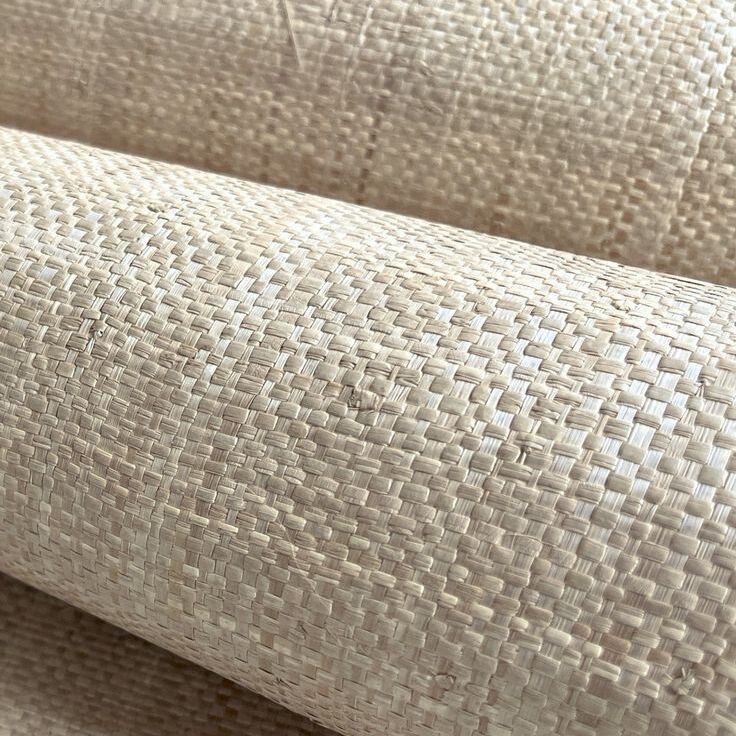
Benefits of Grasscloth Wallpaper in Home Design
Grasscloth wallpaper offers numerous benefits that make it a desirable option in modern home design. From its sustainable nature to its adaptability to various decor styles, it has much to offer.
Eco-Friendly and Sustainable Material
Grasscloth wallpaper is crafted from natural, renewable fibers like jute, seagrass, and sisal. These fibers are eco-friendly, requiring less energy to produce compared to synthetic materials. Its production process is also greener, typically involving hand-weaving, which minimizes the need for industrial machinery.
Because it is made from biodegradable materials, it is an excellent choice for environmentally conscious homeowners. Installing grasscloth wallpaper reduces reliance on synthetic options like vinyl. Its natural origin also ensures a healthier indoor environment, free from harmful chemicals often found in standard wallpapers.
Versatility in Interior Decor
Grasscloth wallpaper is incredibly versatile and complements a wide range of design styles. It comes in various colors, patterns, and textures, making it suitable for diverse spaces. For minimalist interiors, neutral designs can create a serene and refined ambiance. Bold-colored or metallic grasscloth works well in vibrant, modern decor settings, adding a sense of drama and luxury.
Its unique texture adds depth to any room, whether used on all walls or as an accent feature. Grasscloth pairs beautifully with natural elements like wood and stone, enhancing the organic feel of a space. Its adaptability allows it to fit seamlessly into bedrooms, living rooms, offices, and even dining areas, making it a versatile design element for any home.
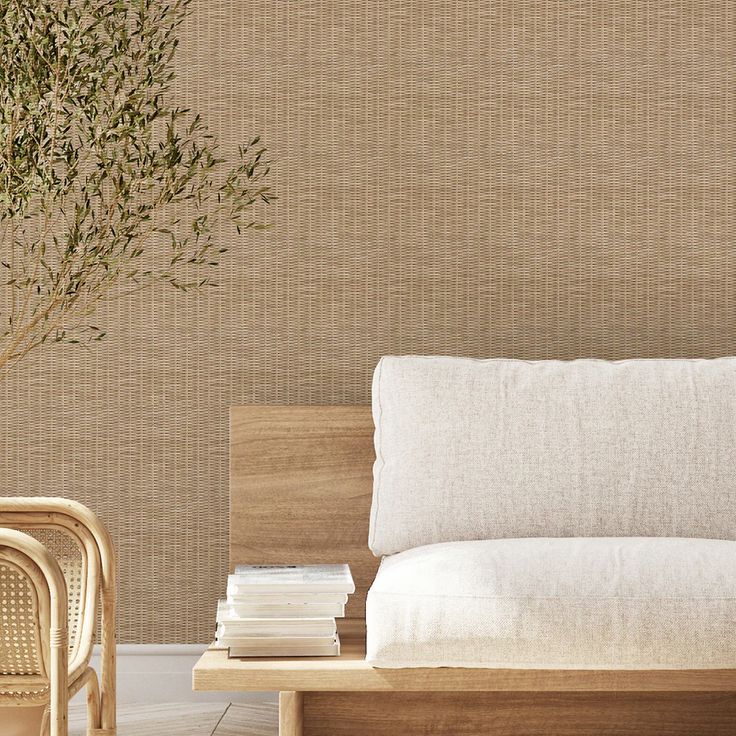
Tips for Choosing the Right Wallpaper
Selecting grasscloth wallpaper requires careful planning to match your interior style and existing décor. Its unique textures and designs offer great versatility, but the right choice ensures a harmonious result.
Matching Styles with Room Types
Grasscloth wallpapers come in various textures and colors to suit different spaces. Neutral and textured designs work best in bedrooms and offices, creating a calm and serene atmosphere. For dining rooms or living spaces, bold colors add drama and energy.
Metallic finishes, such as gold or silver threads, can elevate modern spaces, providing a luxurious feel. Consider the room’s purpose and size when choosing a pattern. Smaller rooms benefit from lighter tones, which open up the space visually. Bright or bold patterns make for great feature walls in larger areas.
Ensuring Compatibility with Existing Decor
To integrate grasscloth wallpaper seamlessly, consider your existing furnishings and finishes. Neutral-colored wallpaper complements wooden furniture and rustic décor effortlessly. Bold designs pair well with modern elements like metallic lighting fixtures and contemporary art.
For harmonious results, select wallpaper that echoes the room’s dominant color palette. If the space includes contrasting textures like stone or leather, grasscloth can provide balance through its organic feel. Ensure that patterns align with your design theme, whether minimalist, rustic, or vibrant.
Choosing the right grasscloth wallpaper enhances your interior design while preserving the room’s character.
How to Properly Install Woven Wallpaper
Installing grasscloth wallpaper requires careful preparation and the right tools. Proper installation ensures lasting beauty and durability. Here’s a guide to help you set it up efficiently.
Tools and Preparation Needed
Before you begin, gather all necessary tools for a smooth process. Here’s what you’ll need:
- Grasscloth wallpaper: Ensure you have enough rolls for your walls with matching dye lots.
- Adhesive or wallpaper paste: Use high-quality adhesive suitable for grasscloth.
- Utility knife: For precise cutting and trimming of the wallpaper edges.
- Measuring tape and level: To measure dimensions accurately and ensure straight alignment.
- Smoothing tool or roller: To eliminate air bubbles and achieve a smooth finish.
- Drop cloth: To protect your floor from adhesives and dust.
- Sponge and water: For wiping excess adhesive and cleaning surfaces.
Preparation is vital for success. Ensure your wall is smooth, clean, and dry. Remove any old wallpaper or flaky paint. Fill cracks or holes for a level surface. Prime the wall, if needed, to ensure perfect adhesion.
Step-by-Step Installation Guide
Follow these steps to install grasscloth wallpaper:
- Measure and cut the wallpaper: Measure the height of your wall and add an extra inch. Cut the first strip with a utility knife.
- Apply adhesive to the wall: Spread an even layer of adhesive using a paint roller. Work on one section at a time.
- Hang the first strip: Start at the top of the wall. Align the strip carefully along the edge. Press it firmly onto the adhesive.
- Smooth out bubbles: Use a smoothing tool to remove air bubbles and wrinkles. Work from the center outward.
- Trim excess material: Use the utility knife to trim excess wallpaper at the top and bottom.
- Match patterns for adjacent strips: Align edges carefully when hanging the next strip. Grasscloth doesn’t have repeated patterns but requires aligned seams.
- Clean adhesive residue: Wipe off excess adhesive immediately with a damp sponge.
- Repeat for the remaining sections: Continue until all walls are covered. Allow proper drying time as per the adhesive instructions.
Installing grasscloth wallpaper may seem challenging but is rewarding. Patience and precision ensure a stunning, textured finish.
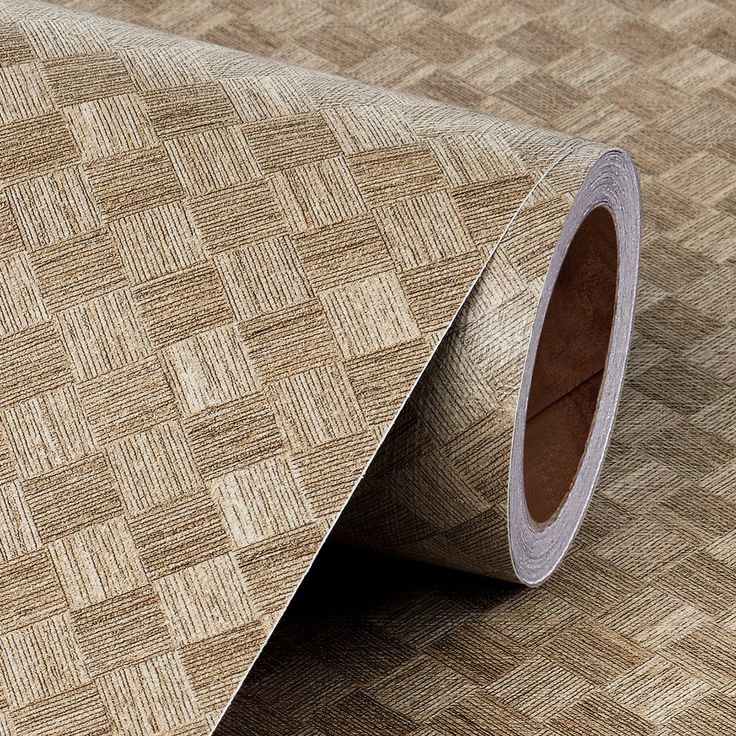
Creative Ways to Use Woven Wallpaper
Grasscloth wallpaper is not limited to just covering walls. Its unique texture and versatile style allow for creative applications, transforming spaces and furniture into stunning design statements. Here are some innovative ways to incorporate grasscloth wallpaper into your decor.
Accent Walls and Statement Pieces
Grasscloth wallpaper works beautifully as an accent wall. Its natural texture draws attention and adds depth. Use it on a single wall in the living room or bedroom. Choose bold colors or metallic designs for a striking focal point. Neutral tones work well for a calming, understated look.
In dining rooms, grasscloth accent walls can create a cozy and elegant atmosphere. Pair it with contrasting furnishings like wooden tables or metallic light fixtures. For feature walls in small spaces, lighter shades help make the room feel spacious and airy.
You can also use grasscloth to frame specific spaces. Apply it behind open shelving, around a fireplace, or even as a backdrop for art displays. This adds subtle texture and enhances the overall design without overwhelming the space.
Furniture and Decorative Applications
Grasscloth wallpaper is highly adaptable beyond walls. Use it to revamp old or plain furniture. Apply it to the surfaces of dressers, tables, or cabinets for a sophisticated, textured finish. This can elevate the furniture, giving it a unique and chic appearance.
Decorate decorative panels or picture frames with grasscloth. Its natural look adds warmth and charm to these smaller elements. You can even use it to cover bookcases or create custom headboards for a cohesive and curated design scheme.
For DIY projects, grasscloth wallpaper is excellent for lining drawers, trays, or boxes. It adds elegance to the interiors of storage pieces. These little touches can tie the room’s decor together while showcasing your creativity.
Grasscloth wallpaper opens up endless possibilities for inventive home design. Whether on walls, furniture, or decor items, its textured beauty transforms ordinary into extraordinary.
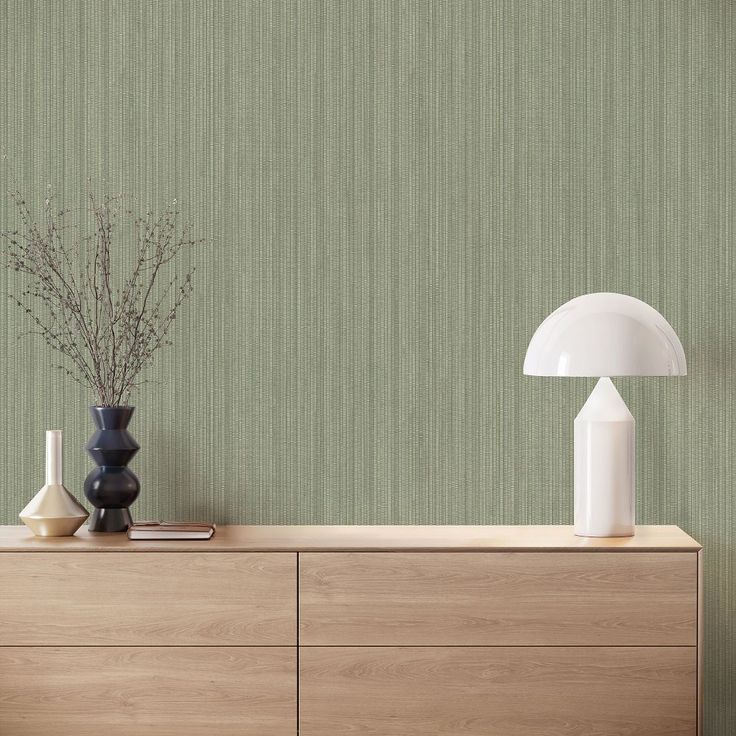
Maintenance and Care for Woven Wallpaper
Proper maintenance keeps grasscloth wallpaper looking stunning and prolongs its lifespan. Its natural fibers require special care to preserve their beauty and durability.
How to Clean and Preserve Its Quality
- Dust Regularly: Use a soft, dry cloth or a handheld vacuum with a brush attachment. This prevents dirt buildup and maintains the texture.
- Spot Clean for Stains: Blot spills immediately with a damp sponge and mild soap. Avoid scrubbing to prevent damage. Test cleaning methods on a hidden area first.
- Avoid Excess Moisture: Keep the wallpaper away from high-humidity areas. Consider using a dehumidifier in such spaces.
- Protect from Sunlight: Direct sunlight can fade natural fibers. Use curtains or blinds to limit sun exposure.
- Minimize Contact: Avoid leaning furniture, frames, or heavy items against grasscloth wallpaper. This prevents scuffs and dents.
- Use a Specialized Cleaner: For stubborn spots, a cleaner designed for natural wallpaper may help. Always follow product instructions.
Regularly cleaning and maintaining grasscloth wallpaper safeguards its unique aesthetic and organic texture.
Common Issues and How to Fix Them
- Loose Edges: If you notice any peeling edges, you can easily fix them. Use wallpaper adhesive to reattach the loose areas. Apply the adhesive sparingly with a small brush to avoid excess buildup.
- Wrinkles or Bubbles: These imperfections can occur during installation. To fix wrinkles or bubbles, pierce them gently with a pin and then smooth them out using a roller. If necessary, add a little adhesive to secure the area.
- Staining: Staining is a common concern with any wallpaper. Severe stains may be difficult to remove. In such cases, consider replacing the affected section with a new strip of grasscloth wallpaper to maintain a uniform look.
- Fading: If your grasscloth is fading due to sunlight exposure, rearranging room layouts can help minimize direct sunlight. Additionally, using UV-filtering window films can protect your wallpaper from further fading.
- Tears or Rips: Small tears can be easily repaired with wallpaper seam adhesive. For larger damages, replacing the affected panel is the best option for restoring its appearance.
Addressing these common issues promptly helps keep the wallpaper looking impeccable. With regular care and quick fixes, grasscloth wallpaper can stay beautiful for years.

